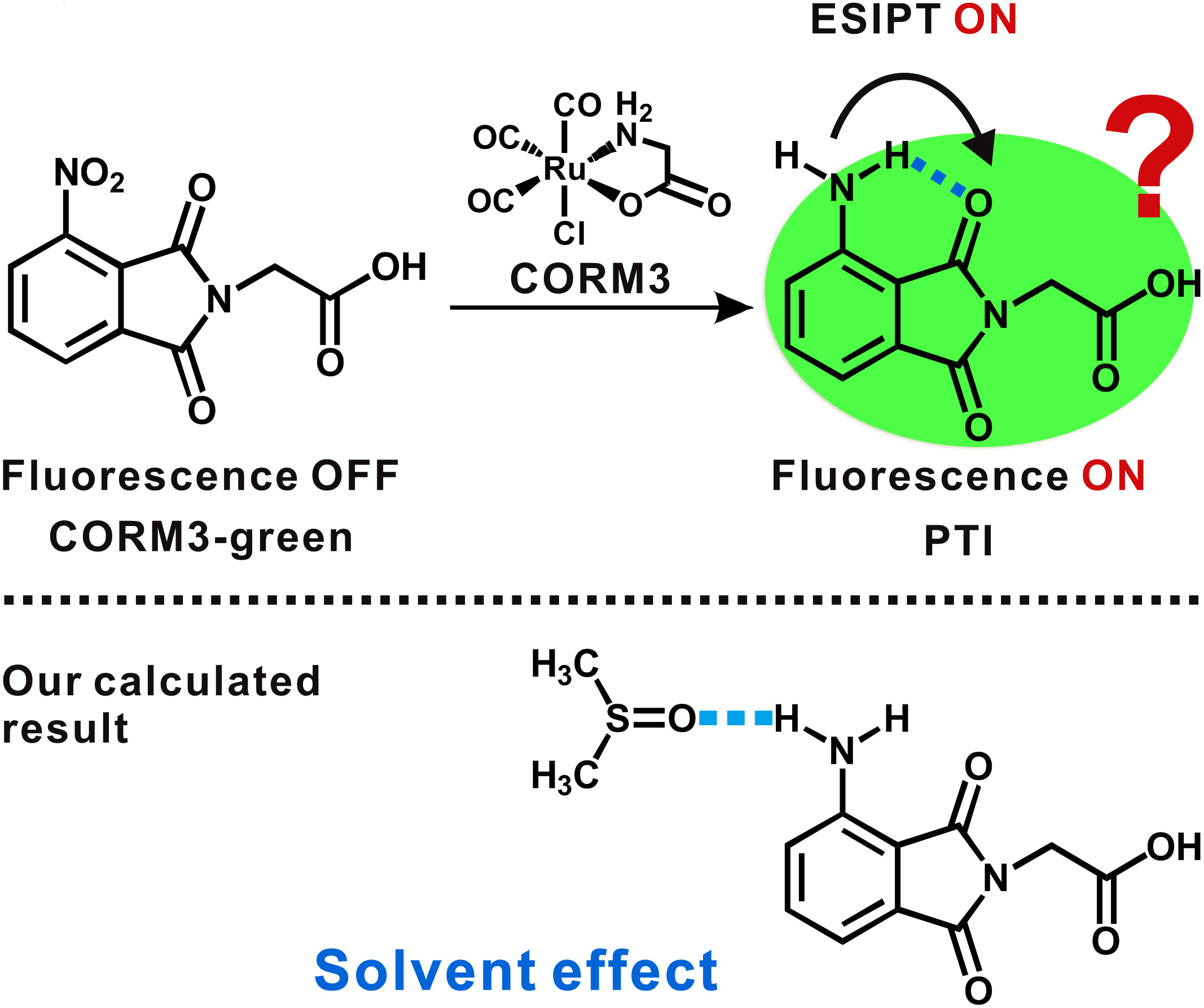近日,生物分离与界面分子机制研究组(18T7组)在激发态氢键作用机制方面取得进展,通过高精度的理论计算,从分子水平揭示了小分子荧光探针的发光机理,为高效荧光传感机制提供了一种新的策略,有助于光物理和光化学领域中新型荧光探针的设计和开发。
激发态氢键强烈影响分子内电荷转换过程,非常适合高性能荧光探针的设计和开发。然而,二甲基亚砜(DMSO)作为最常用于传感的溶剂或添加剂之一,激发态氢键作用机制中很少被研究。作为这项研究的目标,通过基于密度泛函理论(DFT)的量子化学计算,研究了用于体内一氧化碳释放分子(CORM-3)的CORM3-绿色荧光探针系统的传感机制。在通过降低密度梯度函数和红外光谱分析DMSO的溶剂作用的基础上,我们提供了解释荧光机理的新策略。随后,我们通过邻苯二甲酰亚胺(PTI,CORM3-green的还原产物)的势能曲线验证了该结果。PTI和DMSO之间的激发态氢键促进了辐射跃迁,并导致PTI和PTI-DMSO的光物理性质出现明显差异。
相关成果发表在《中国化学》(Chin. J. Chem. 2020, DOI: 10.1002/cjoc.202000604)上。以上研究工作得到国家自然科学基金、我所创新特区组启动基金、兴辽英才计划等项目的支持。
Sensing Mechanism of Excited-State Intermolecular Hydrogen Bond for Phthalimide: Indispensable Role of Dimethyl Sulfoxide
Dongdong Wang,Tianxin Bai,Xue Wang,Yuting Xiong,Yahui Zhang,Zhenqiang Shi,Fusheng Zhang,Wenqi Lu and Guangyan Qing*
Chin. J. Chem. 2020, 39, 1113-1120
DOI: 10.1002/cjoc.202000604

Excited-state hydrogen bond strongly affects the intramolecular charge conversion process, which is very suitable for the design and development of high-performance fluorescent probes. However, as one of the most common solvents or additives used in sensing, the role of dimethyl sulfoxide (DMSO) in the system of the excited-state hydrogen bond is seldom explored. As the goal of this research, we investigated the sensing mechanism of a CORM3-green fluorescent probe system for carbon monoxide releasing molecule (CORM-3) detection and tracking in vivo, through quantum chemistry calculations based on density-functional-theory (DFT)/ time-dependent density-functional-theory (TDDFT) methods. Based on the analysis of the solvent effect of DMSO by the reduced density gradient function and IR spectroscopy, we provided a new strategy to explain the fluorescence mechanism. Subsequently, we verified the result through the potential energy curve of Phthalimide (PTI, the reduced product of CORM3-green). The excited-state hydrogen bond between PTI and DMSO promotes radiation transition and leads to obvious difference in the photophysical properties of PTI and PTI-DMSO.